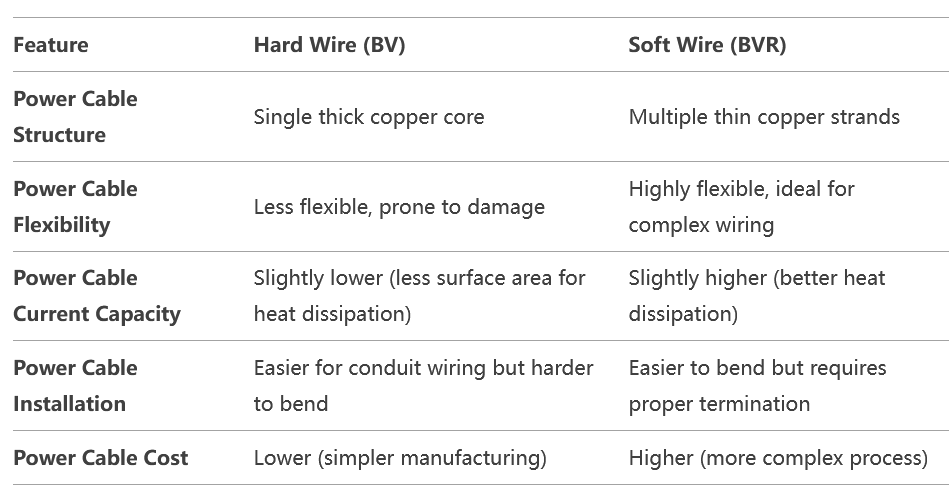Power Cable Selection Guide for Home Decoration: Avoid These Common Mistakes

Blind Spot 1: Power Cable Material – Copper vs. Aluminum
Why Copper is the Superior Choice for Power Cable Conductors
Power Cable Conductivity
Aluminum has a resistivity 1.68 times higher than copper, meaning aluminum power cables generate more heat under the same current (as per the formula P=I2R). This results in higher energy loss and increased electricity bills over time.
Additionally, excessive heat can degrade insulation, posing a fire risk.
Aluminum wires are prone to oxidation, leading to loose connections and arcing, which increases the risk of short circuits. Copper wires, on the other hand, are more resistant to oxidation and provide more stable connections.
National standards (e.g., GB/T 5023 in China) recommend using copper power cables for home wiring, as they are safer and more durable.
While aluminum wires are cheaper initially, the long-term energy losses and potential maintenance costs make copper power cables more economical over a 20-year period.
Copper-clad aluminum wires may seem like a cost-effective alternative, but their performance is inferior to pure copper wires.
Buying Tips for Power Cable Materials
Always choose pure copper power cables (with a copper content of ≥99.9%). Look for labels like “T2 oxygen-free copper” or “TU1 high-purity copper.”
Avoid low-cost traps – aluminum power cables are only suitable for temporary applications, such as construction sites.Blind Spot 2: Power Cable Types – Hard Wire (BV) vs. Soft Wire (BVR)
Key Differences Between BV and BVR Power Cables

Recommended Applications for Power Cable Types
Hard Wire (BV) Use Cases✅ Concealed wiring (easier to pull through conduits)
✅ Fixed outlets and switches (more stable connections)
✅ Budget-conscious projects with minimal future modifications
Soft Wire (BVR) Use Cases
✅ Distribution board connections (frequent bending required)
✅ Lighting fixtures (complex routing needs)
✅ Retrofitting old wiring (easier to maneuver in tight spaces)
Installation Tips for Power Cables
-
For soft wires, always use ferrules or tinning to prevent strand separation and ensure secure connections.
-
Avoid repeatedly bending hard wires, as this can cause the copper core to break.
Ultimate Buying Principles for Power Cables
-
Power Cable Material First: Always choose pure copper wires and avoid aluminum or copper-clad aluminum.
-
Power Cable Application Match: Use BV for concealed wiring and BVR for exposed or complex wiring.
-
Power Cable Certification: Look for national standards (e.g., GB) and 3C certification. Ensure the wire cross-section meets requirements (e.g., 1.5mm² for lighting, 2.5mm² for outlets, 4mm² for air conditioners).
-
Power Cable Brands: Opt for reputable brands,product passed good quality certification (UL/CE/ISO etc).
like YUEDAO (CLOUDTOPCABLE)to avoid substandard products.
to know more about our products,welcome to visit our website for more details:
https://cloudtopcable.com/collections/weak-current-cable-32
Leave a Reply
- HYA 50×2×0.4 Communication Cable: Reliable Solution for Guangzhou Surveillance Systems
- Why Does Your EV Stop Charging Suddenly? Let’s Troubleshoot!
- Yuedao Intelligent Empowers Guangzhou Metro to Set World Record for Fastest Subway Speed
- Become Our Local Partner - Expand Your Market with High-Quality Cables & Wires
